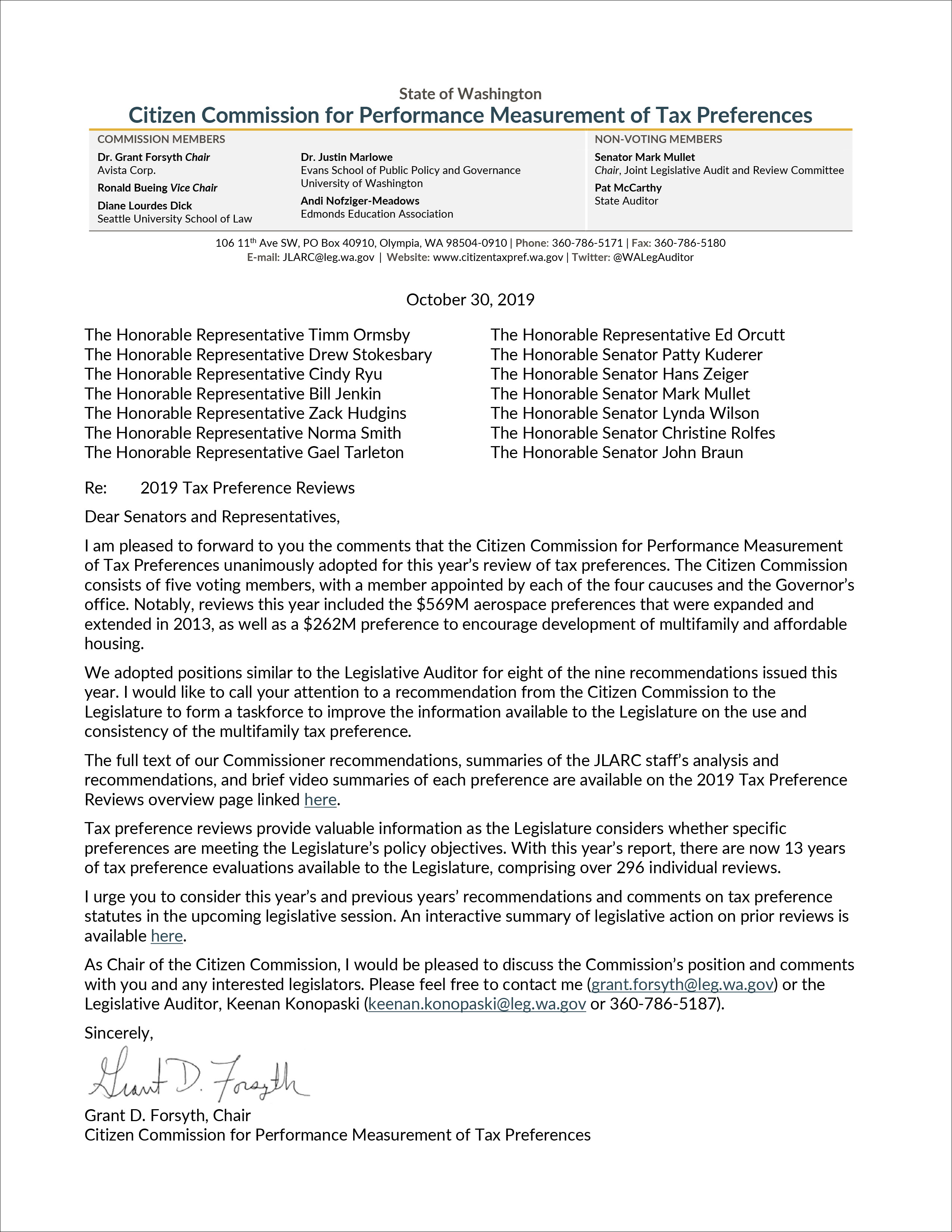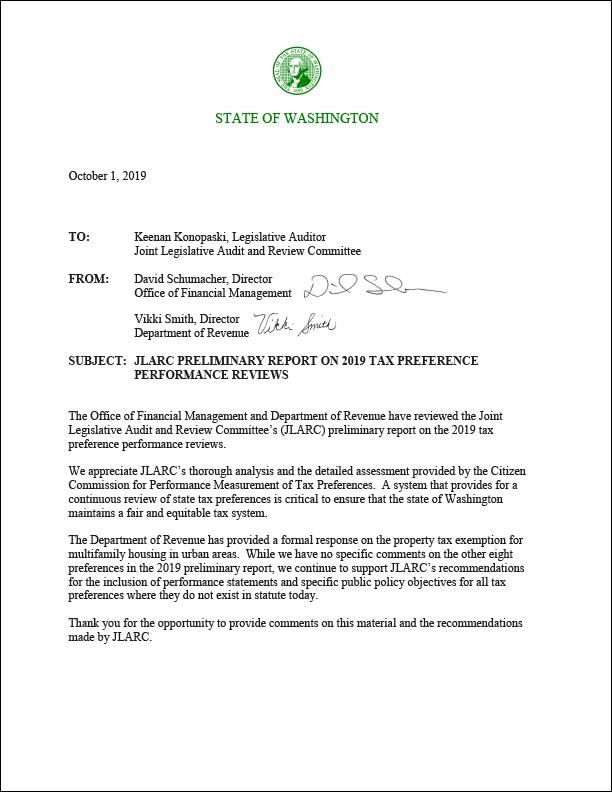Exemptions-Hog fuel used to generate electricity, steam, heat, or biofuel.
RCW 82.08.956
(Expires June 30, 2024.)
(1) The tax levied by RCW 82.08.020 does not apply to sales of hog fuel used to
produce electricity, steam, heat, or biofuel. This exemption is available only if the
buyer provides the seller with an exemption certificate in a form and manner
prescribed by the department. The seller must retain a copy of the certificate for the
seller's files.
(2) For the purposes of this section the following definitions apply:
(a) "Hog fuel" means wood waste and other wood residuals including forest derived
biomass. "Hog fuel" does not include firewood or wood pellets; and
(b) "Biofuel" has the same meaning as provided in *RCW 43.325.010.
(3) If a taxpayer who claimed an exemption under this section closes a facility in
Washington for which employment positions were reported under RCW 82.32.605, resulting
in a loss of jobs located within the state, the department must declare the amount of
the tax exemption claimed under this section for the previous two calendar years to be
immediately due.
(4) This section expires June 30, 2024.
[2013 2nd sp.s. c 13 § 1002;
2009 c 469 § 301.]
NOTES:
*Reviser's note: RCW 43.325.010 expired June 30, 2016.
Intent - 2013 2nd sp.s. c 13: "It is the intent of the legislature to retain
and grow family-wage jobs in rural, economically distressed areas; to promote healthy
forests; and to utilize Washington's abundant natural resources to promote diversified
renewable energy use in the state." [2013 2nd sp.s. c 13 § 1001.]
Effective date - 2013 2nd sp.s. c 13: "Parts III, X, XV, and XVI of this act
are necessary for the immediate preservation of the public peace, health, or safety of
the state government and its existing public institutions, and take effect July 1,
2013." 2013 2nd sp.s. c 13 § 1903.]
Effective date - 2009 c 469: See note following RCW 82.08.962.
Exemptions - Hog fuel used to generate electricity, steam, heat, or biofuel.
RCW 82.12.956
(Expires June 30, 2024.)
(1) The provisions of this chapter do not apply with respect to the use of hog fuel
for production of electricity, steam, heat, or biofuel.
(2) For the purposes of this section:
(a) "Hog fuel" has the same meaning as provided in RCW 82.08.956; and
(b) "Biofuel" has the same meaning as provided in *RCW 43.325.010.
(3) This section expires June 30, 2024.
[2013 2nd sp.s. c 13 § 1003;
2009 c 469 § 302.]
NOTES:
*Reviser's note: RCW 43.325.010 expired June 30, 2016.
Intent - Effective date - 2013 2nd sp.s. c 13: See notes following RCW
82.08.956.
Effective date - 2009 c 469: See note following RCW 82.08.962.
Review of hog fuel tax exemption by joint legislative audit and review committee.
RCW 43.136.057
(Expires June 30, 2024.)
(1) The intent of the tax exemption provided in RCW 82.08.956 and 82.12.956 is to
promote the retention of relatively high wage jobs in the counties where facilities
who purchase and use hog fuel are located. Specifically, in a time when there is
increasing pressure to close industrial facilities like mills and relocate this
economic activity out of state or overseas, rural areas of the state are at risk of
losing critical jobs that directly, or indirectly, support entire communities. The
legislature, in enacting the hog fuel tax exemption, hopes to retain seventy-five
percent of the jobs at each facility in the state at which the exemption is claimed,
between now and June 30, 2024.
(2) The joint legislative audit and review committee must review the performance
through July 1, 2018, of the tax preferences established in RCW 82.08.956 and
82.12.956, and prepare a report to the legislature by October 31, 2019.
(3) The department of revenue must provide the committee with annual survey
information and any other tax data necessary to conduct the review required in
subsection (2) of this section. The employment security department and other agencies,
as requested, must cooperate with the committee by providing information about the
average wage of employment in the county where each facility owned or operated by a
company claiming the exemption is located. The report is not limited to, but must
include, the following information:
(a) Identification of the baseline number of jobs existing as of January 1, 2013, in
facilities where the preference has been claimed, as well as related wage and benefit
information;
(b) Identification of how the number of jobs at these facilities has changed during
the duration of the credit;
(c) Analysis of how the wages provided to employee at affected facilities compare to
the average wages in the county in which the facility is located;
(d) Analysis of how the benefits, including medical and other health care benefits,
provided to employees at affected facilities compare to the average wages in the
county in which the facility is located; and
(e) Whether and to what extent the goal has been achieved, of retaining seventy-five
percent of employment at the facilities at which the exemption has been claimed.
(4) This section expires June 30, 2024.
[2013 2nd sp.s. c 13 § 1005.]
NOTES:
Intent - Effective date - 2013 2nd sp.s. c 13: See notes following RCW
82.08.956.
❮ Previous
Next ❯










